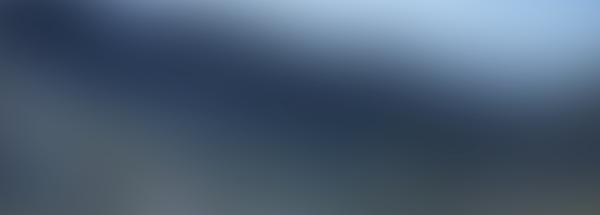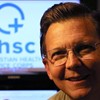From Dr. Warren Cooper, CHSC Missionary serving in the D.R. Congo with his wife, Dr. Lindsey Cooper -
It was a great pleasure for us to host some special visitors. We had a great visit from Carl Reading and Tim and Nancy Dowdell. Carl and Tim are radiologists and they did a lot of teaching during their time here. Here at Nyankunde Hospital, we all have to read our own X-rays and do our own ultrasounds. We do our best, but we are all limited to one degree or another. During this time we organized the first annual (hopefully) Radiology Conference of Nyankunde Hospital. We invited doctors from some of the surrounding hospitals as well as physicians practicing here for an intensive training session in Ultrasound and X-ray. What we discovered was…that we have a long way to go.
Medical imaging in an interesting thing. To the uninitiated, it probably seems like you get an exam such as an X-ray or a CT scan, and it simply shows you what is wrong. Sort of, but you’ve got to SEE it. You have to understand the anatomy and make the correlations between the unique individual, the organs, the disease and the pixels on the screen. When Jesus healed the blind man, that man saw people, but they looked like trees walking around. That’s kind of where we are now. How do we teach people how to see, how to interpret the images, make clinical correlations, and use them to improve medical care? To some degree it takes place in a lecture, but it also takes place in a real-life clinical setting. Tim and Carl did a great job bridging that gap between the theory and practice. It was great to see some of our young doctors have that elusive “AHA moment” when they really got it. In the past we could always blame our poor interpretation of X-rays on the poor quality of our films, but with digital X-ray, the quality of the image is superb and you have only yourself to blame.
For some reason, our doctors seem to “get” ultrasound faster than they get X-ray interpretation. I’m not sure why this is, but they start to interpret those grainy, floating dots on the screen and begin to master the views, identify organs and diseases. We are all somewhere on that continuum, and the more we do ultrasound, the better we get. 20 years ago, I snuck into the ultrasound room of a hospital which I will not now name, opening up a textbook of ultrasound, turning on the machine (the size of a large kitchen stove) and hunting around for my pancreas. I’ve come a long way, but there’s still a lot to learn and new horizons ahead. I’m an ultrasound junkie, but this one technology has revolutionized the way that a clinician in a limited setting, can reliably “see” (actually “hear” is more correct) what is going on in the human body. The stethoscope is essentially a toilet paper roll that we press on the patient’s skin and hear the rumbling within. Ultrasound is infinitely more useful to me. A stethoscope looks good around your neck, but an ultrasound really gives you a window to the inside.
Carl Reading brought me a new tool which I ordered and am excited about. It is a wireless portable ultrasound probe which connects via WiFi to any smartphone or tablet. It is made by a Chinese company and I bought it on EBay using PayPal! What a brave new world! I felt like I was taking a step into the unknown…but the darn thing actually works! I can carry it in my pocket, connect it to my IPhone and use it on rounds to make a diagnosis. Any “Trekkies” out there? Remember Dr. McCoy and the “Tricorder”? It’s here, and I bought one from China! OK, call me an “early adapter” but I can put it in my pocket, take it anywhere. I can save images, clips and send them to a real expert, like Carl. The image quality is not exactly top-of-the-line, but it is decent and usable. With each generation it will get better and better. My prediction is that within a few years, every clinician will have one of these in pocket, and that we’ll finally ditch that stethoscope.












